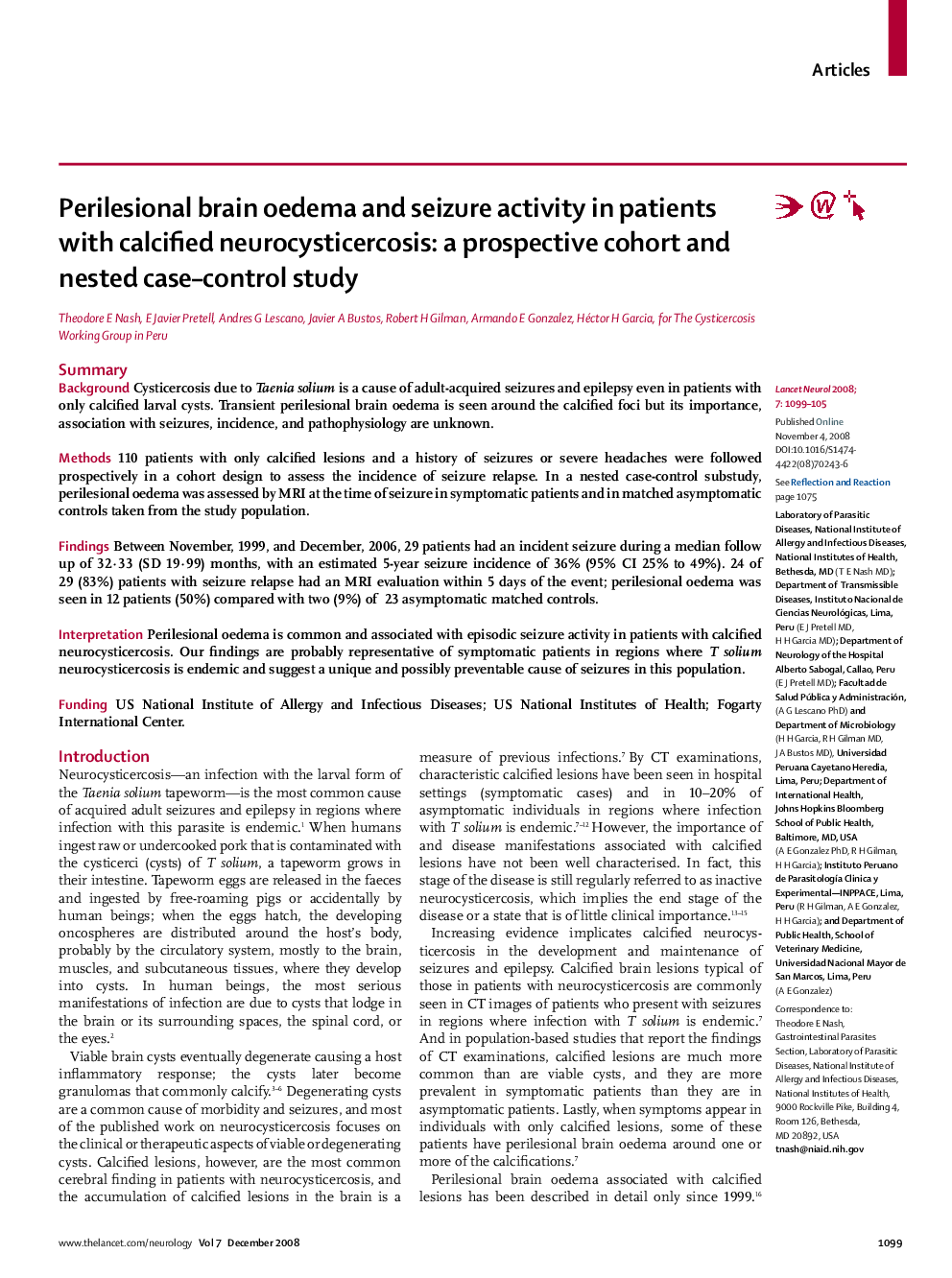| Article ID | Journal | Published Year | Pages | File Type |
|---|---|---|---|---|
| 3067762 | The Lancet Neurology | 2008 | 7 Pages |
SummaryBackgroundCysticercosis due to Taenia solium is a cause of adult-acquired seizures and epilepsy even in patients with only calcified larval cysts. Transient perilesional brain oedema is seen around the calcified foci but its importance, association with seizures, incidence, and pathophysiology are unknown.Methods110 patients with only calcified lesions and a history of seizures or severe headaches were followed prospectively in a cohort design to assess the incidence of seizure relapse. In a nested case-control substudy, perilesional oedema was assessed by MRI at the time of seizure in symptomatic patients and in matched asymptomatic controls taken from the study population.FindingsBetween November, 1999, and December, 2006, 29 patients had an incident seizure during a median follow up of 32·33 (SD 19·99) months, with an estimated 5-year seizure incidence of 36% (95% CI 25% to 49%). 24 of 29 (83%) patients with seizure relapse had an MRI evaluation within 5 days of the event; perilesional oedema was seen in 12 patients (50%) compared with two (9%) of 23 asymptomatic matched controls.InterpretationPerilesional oedema is common and associated with episodic seizure activity in patients with calcified neurocysticercosis. Our findings are probably representative of symptomatic patients in regions where T solium neurocysticercosis is endemic and suggest a unique and possibly preventable cause of seizures in this population.FundingUS National Institute of Allergy and Infectious Diseases; US National Institutes of Health; Fogarty International Center.
